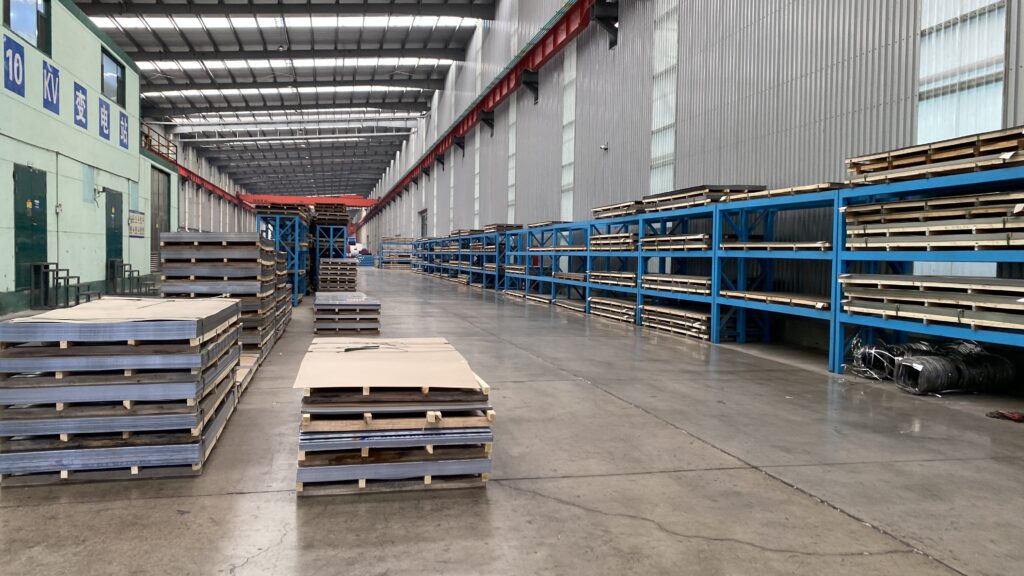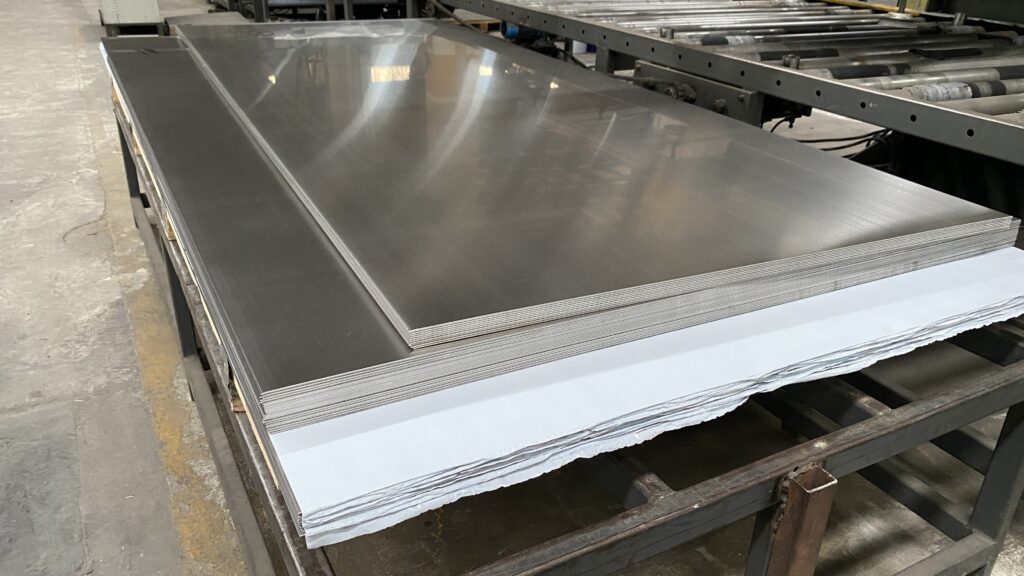Welcome to My Blog!
Before we dive into the content, I’d love for you to join me on my social media platforms where I share more insights, engage with the community, and post updates. Here’s how you can connect with me:
Facebook:https://www.facebook.com/profile.php?id=100087990137347
LinkedIn:https://www.linkedin.com/company/89825762/admin/dashboard/
YouTube:www.youtube.com/@carbonsteelsupply-kj9lw
TikTok:www.tiktok.com/@carbonsteelsupply
Now, let’s get started on our journey together. I hope you find the content here insightful, engaging, and valuable.
Introduction
316 stainless steel tubing has become a preferred material in many industrial applications due to its exceptional durability, corrosion resistance, and ability to withstand harsh environments. Whether you’re in the chemical, pharmaceutical, marine, or food processing industries, 316 stainless steel tubing offers the reliability needed for demanding projects. In this blog, we will explore the top benefits of 316 stainless steel tubing for industrial use, highlight its applications, and explain why it’s a superior choice over other materials.

1. What is 316 Stainless Steel Tubing?
316 stainless steel tubing is a type of steel alloy that contains chromium, nickel, and molybdenum, which contribute to its strength and corrosion resistance. The addition of molybdenum sets it apart from 304 stainless steel, improving its resistance to chloride environments and making it highly effective in chemical processing, marine applications, and food production.
Key Composition of 316 Stainless Steel:
| Element | Percentage (%) |
|---|---|
| Chromium | 16.0 – 18.0 |
| Nickel | 10.0 – 14.0 |
| Molybdenum | 2.0 – 3.0 |
| Carbon | Max 0.08 |
| Manganese | Max 2.0 |
| Phosphorus | Max 0.045 |
| Sulfur | Max 0.03 |
| Silicon | Max 1.0 |
2. Corrosion Resistance in Harsh Environments
One of the most significant advantages of 316 stainless steel tubing is its resistance to corrosion. Thanks to the addition of molybdenum, this type of tubing can withstand harsh chemical environments that would degrade other materials, especially in industries such as:
- Chemical processing: where exposure to acidic and alkaline solutions is common.
- Marine environments: where high levels of salt and humidity are prevalent.
- Pharmaceuticals: where hygiene and resistance to chemical exposure are critical.
Why 316 Stainless Steel Tubing Excels:
- Resistant to Chlorides: Unlike 304 stainless steel, 316 stainless steel tubing performs exceptionally well in chloride-rich environments such as seawater.
- Acid Protection: It resists sulfuric acid, which makes it ideal for chemical industries.
3. Heat and Pressure Resistance
In many industrial applications, materials must withstand not only corrosive environments but also high temperatures and pressures. 316 stainless steel tubing offers excellent performance in extreme conditions, retaining its structural integrity when exposed to:
- High-pressure systems: Common in petrochemical and oil industries.
- Elevated temperatures: Such as in heat exchangers and furnaces.
Temperature and Pressure Tolerance of 316 Stainless Steel Tubing:
| Environment | Temperature (°C) | Pressure (MPa) |
|---|---|---|
| Chemical Reactors | 400°C | 20 MPa |
| Heat Exchangers | 500°C | 15 MPa |
| Marine Equipment | 200°C | 10 MPa |
This ability to withstand both high pressure and heat makes 316 stainless steel tubing a versatile material in industries with challenging conditions.
4. Hygienic Properties for Food and Pharmaceutical Industries
Another significant advantage of 316 stainless steel tubing is its hygienic properties. This material is widely used in food processing, beverage production, and pharmaceutical industries due to its ability to:
- Prevent contamination: The smooth surface finish of 316 stainless steel tubing makes it easy to clean, reducing the risk of bacterial growth.
- Ensure safety: It doesn’t react with food or chemicals, maintaining the purity of the materials transported within the tubing.
316 stainless steel tubing is often the top choice in applications requiring compliance with strict hygiene standards, such as the FDA regulations in the U.S. and the European Union food safety standards.
5. Durability and Low Maintenance
Durability is another key benefit of 316 stainless steel tubing. Once installed, it requires minimal maintenance, which reduces operational costs in the long term. Its resistance to environmental and chemical degradation makes it a low-maintenance option in industries where regular repairs or replacements would be costly.
Key Durability Benefits:
- Long lifespan: 316 stainless steel tubing lasts significantly longer than carbon steel or other less durable materials.
- Reduced downtime: Minimal corrosion or damage reduces the need for frequent inspections and repairs.
- Cost-effective: Despite a higher upfront cost, the long-term savings in maintenance and replacement make it a wise investment for industrial applications.
6. Environmental Sustainability
In today’s industries, environmental sustainability is an important consideration. 316 stainless steel tubing is 100% recyclable, contributing to sustainability efforts in various sectors. Once the tubing reaches the end of its useful life, it can be recycled and repurposed, reducing the demand for raw materials and minimizing environmental impact.
Sustainability in Action:
- Recyclability: Stainless steel is one of the most recycled materials globally, ensuring a lower environmental footprint.
- Energy-efficient production: Compared to some other metals, stainless steel has a relatively energy-efficient production process.
- Long-term usage: The long lifespan of 316 stainless steel tubing reduces the frequency of replacements, cutting down on resource consumption.
7. Versatility in Various Industrial Applications
316 stainless steel tubing is incredibly versatile and used across a wide range of industries. Its ability to handle different pressures, temperatures, and environments makes it suitable for:
- Oil and gas industries: Where it is used in pipelines, offshore platforms, and refineries.
- Pharmaceutical industries: Where cleanliness and chemical resistance are paramount.
- Food and beverage industries: For transporting liquids and gases in production lines.
- Construction: For structural applications that require corrosion resistance and strength.
This versatility not only increases its usefulness but also makes it a cost-effective choice for companies working across different sectors.
Table: Key Industrial Applications of 316 Stainless Steel Tubing
| Industry | Application Example | Why 316 Stainless Steel Tubing? |
|---|---|---|
| Oil & Gas | Pipelines, refineries | High pressure and corrosion resistance |
| Food & Beverage | Production lines, storage tanks | Hygiene, non-reactive with food |
| Pharmaceuticals | Transporting chemicals, cleanrooms | Sterility, chemical resistance |
| Marine | Shipbuilding, offshore platforms | Resistance to saltwater corrosion |
| Chemical Processing | Chemical reactors, storage containers | Acid and chloride resistance |

Conclusion
316 stainless steel tubing is an exceptional material for a variety of industrial applications due to its superior corrosion resistance, durability, and ability to withstand harsh environments. Its versatility makes it an invaluable resource across multiple industries, from chemical processing to food production. The cost-effectiveness, long lifespan, and low maintenance requirements make 316 stainless steel tubing the preferred choice for industries looking for reliability and sustainability.
FAQ
1. What is the difference between 304 and 316 stainless steel tubing?
The main difference is that 316 stainless steel contains molybdenum, which gives it superior corrosion resistance, especially in chloride or marine environments. 304 is less expensive but may not perform as well in harsh conditions.
2. Is 316 stainless steel tubing suitable for high-temperature applications?
Yes, 316 stainless steel tubing can withstand high temperatures, making it suitable for applications in heat exchangers, furnaces, and chemical processing plants.
3. Why is 316 stainless steel tubing used in the food industry?
316 stainless steel tubing is used because it is easy to clean, resists corrosion from food acids, and does not react with the materials it comes into contact with, ensuring product safety.
4. How long does 316 stainless steel tubing last?
When properly maintained, 316 stainless steel tubing can last for decades due to its resistance to corrosion and wear.
5. Is 316 stainless steel tubing environmentally friendly?
Yes, 316 stainless steel tubing is 100% recyclable, making it an environmentally friendly option for industrial applications.
